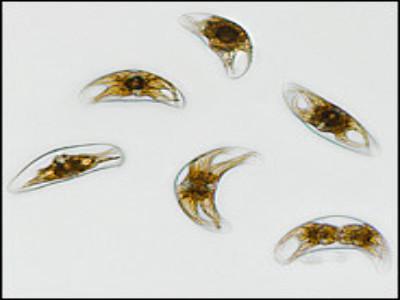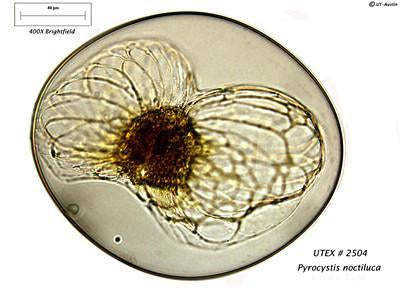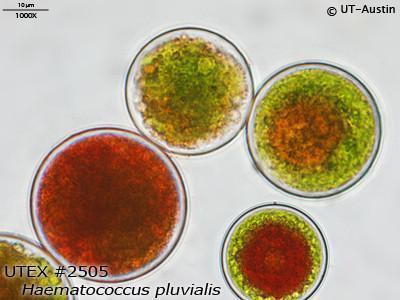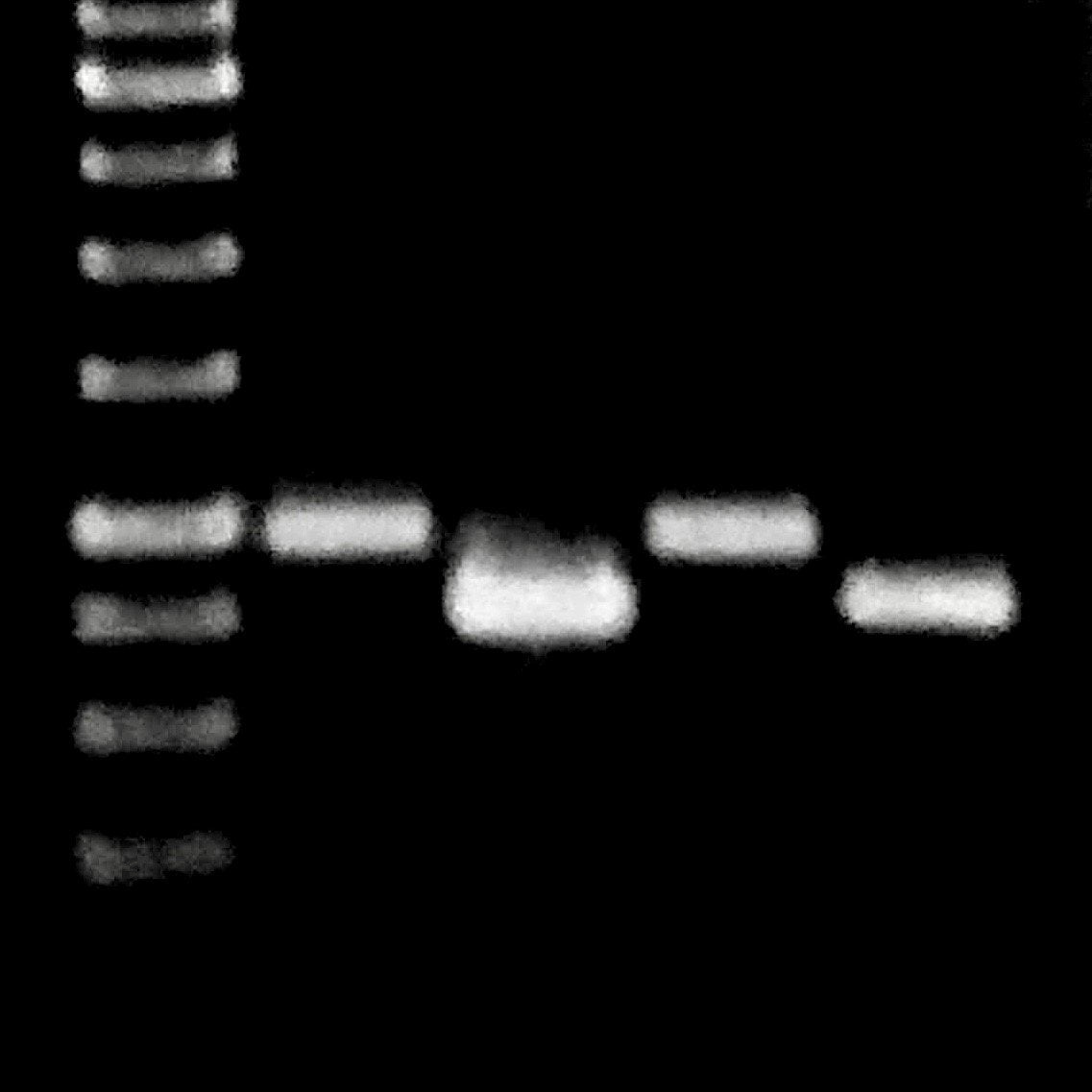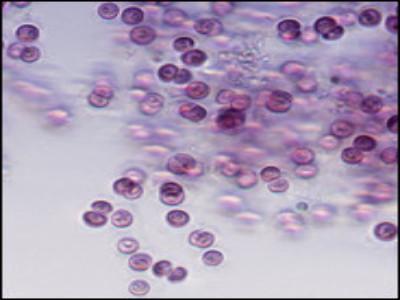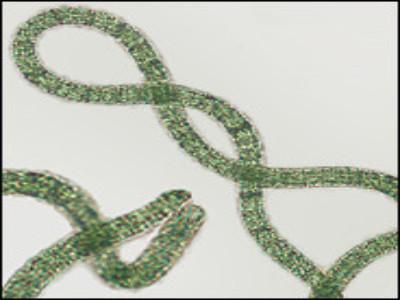About
Bioluminescence is the production and emission of light by a living organism as the result of a chemical reaction during which chemical energy is converted to light energy. The chemical enzyme responsible for this light emission in many organisms is called luciferase. This same enzyme is found in fireflies. Pyrocystis is a marine single-celled alga that emits light when a culture is stressed such as by mechanical agitation or by the addition of acetic acid.
The tubes should be put in a 24 hour (12 hour light:12 hour dark works well) photoperiod after they are received. In order to induce and visualize bioluminescence, a tube containing Pyrocystis can be vigorously agitated in darkness after 2 hours into their dark cycle. Dark can be achieved with Aluminum foil wrapped around the tubes and then placed in a drawer or closet. For the light cycle just place the tubes under regular fluorescent lamps. Adapt the cultures for at least 3 days before agitating the tubes. Pyrocystis should be maintained at comfortable room temperature, never higher than 26 °C or lower than 21 °C. Cultures may be temporarily placed at higher or lower temperatures for experimental treatments.
Please note: The kit will contain either Pyrocystis lunula or Pyrocystis noctiluca as chosen by the Culture Collection Manager. We cannot guarantee a certain species or take requests; however, all six tubes will be the same species. Teaching kits will be filled with the species determined to be the healthiest on a week to week basis by the Culture Manager. Both species will bioluminesce.
Experiment Suggestions
- How does temperature or light intensity affect the bioluminescence observed?
- Does the bioluminescence emitted change depending on when into their dark phase you agitate the tubes?
- How does a brief heat period affect bioluminescence?
- How does a shorter or longer photoperiod affect the bioluminescence observed?
